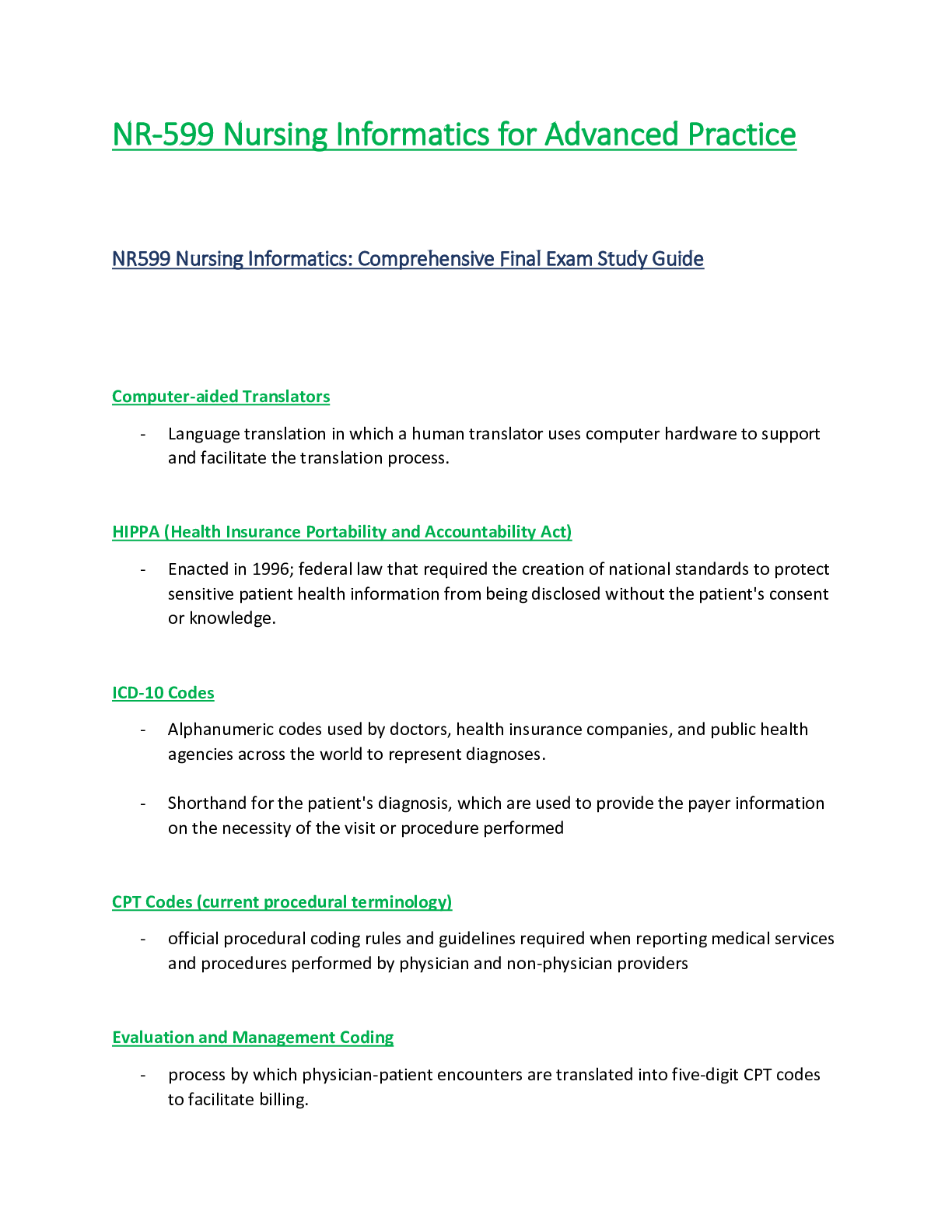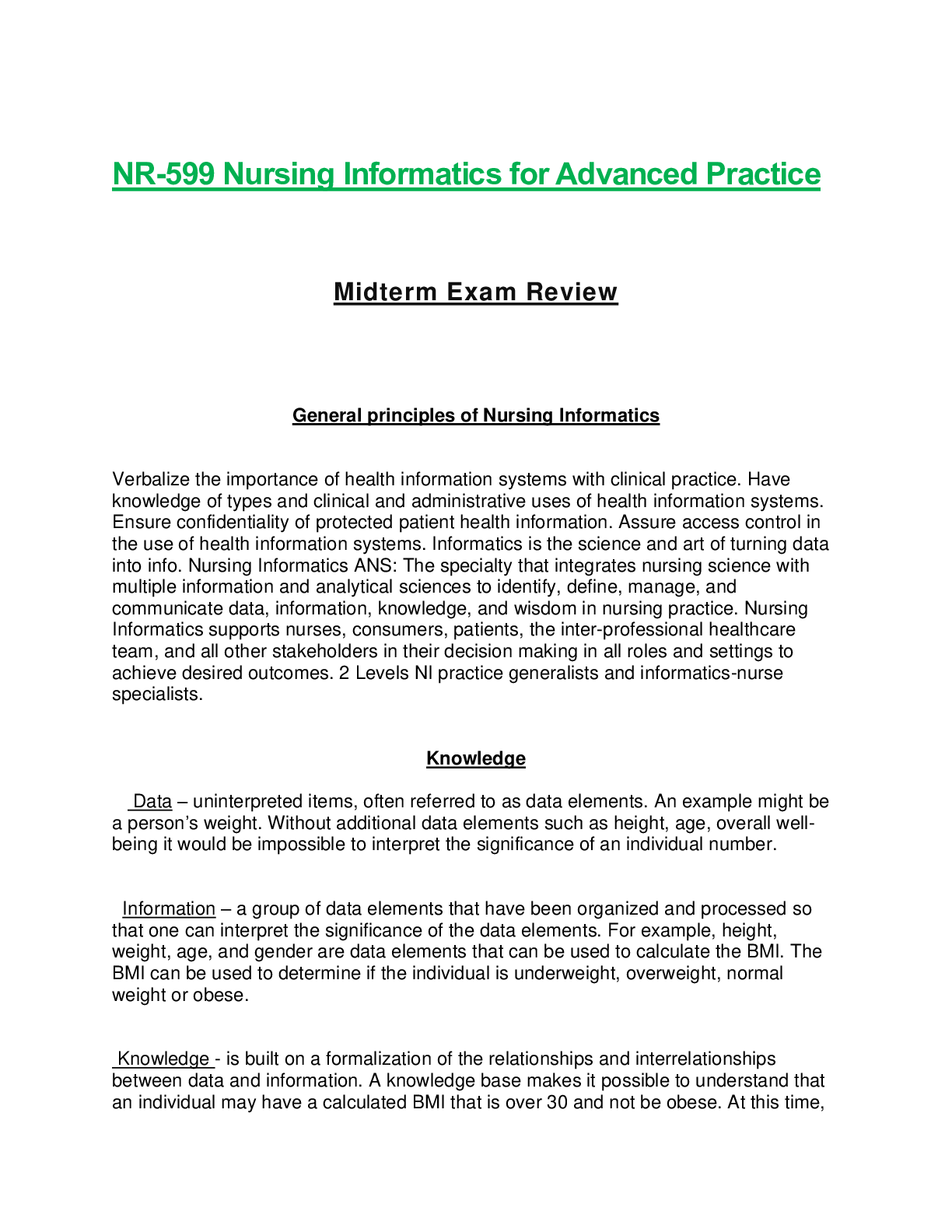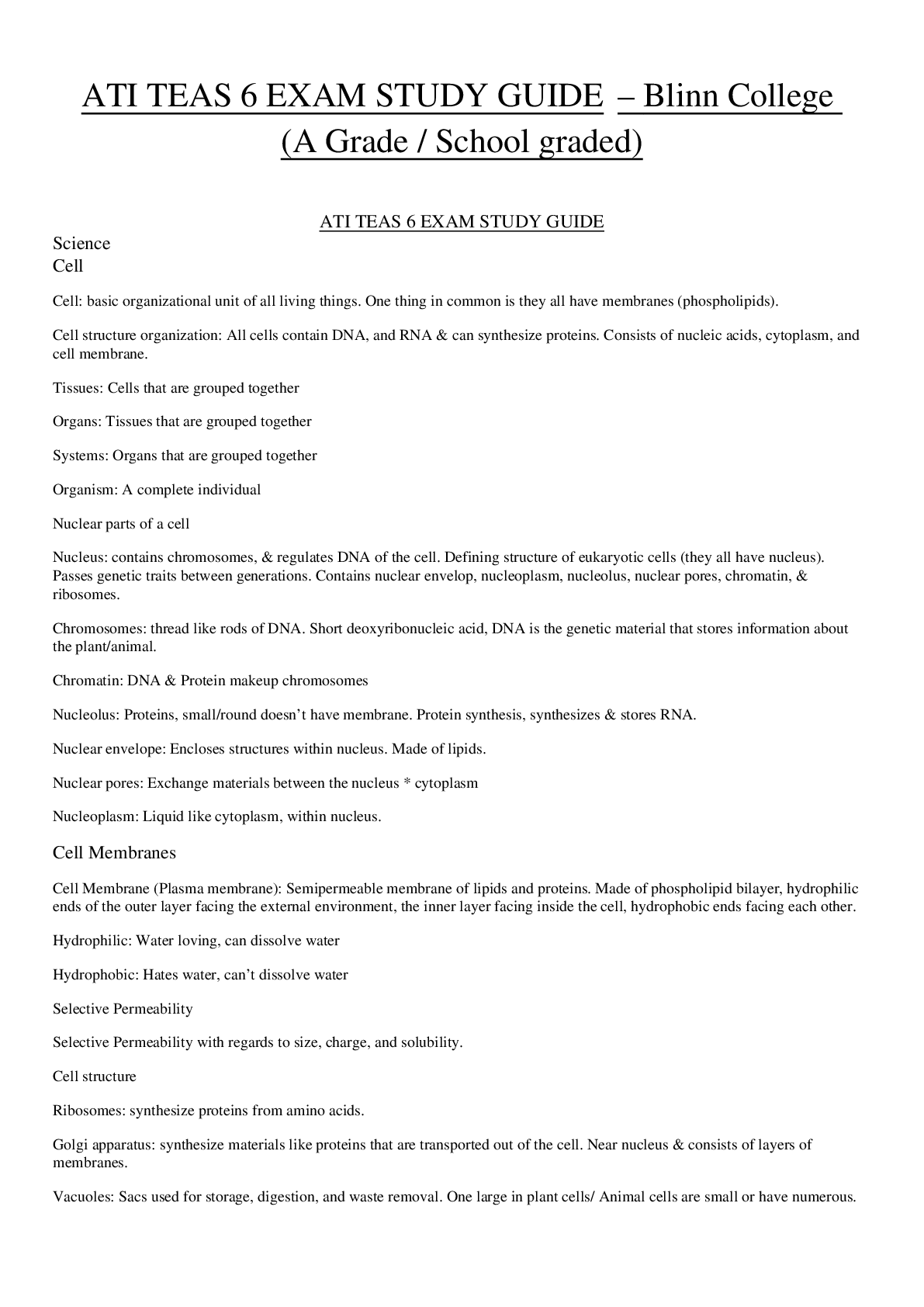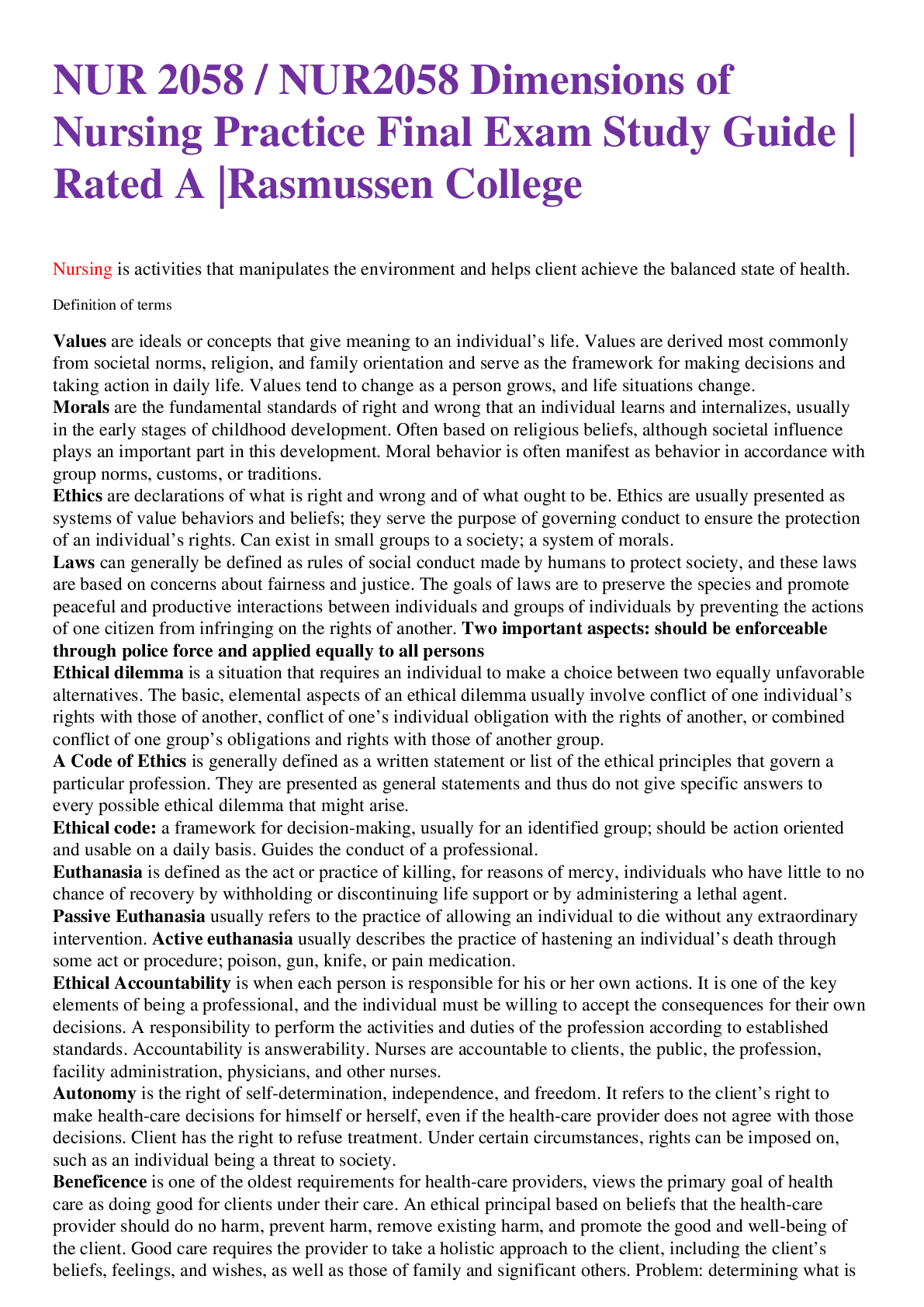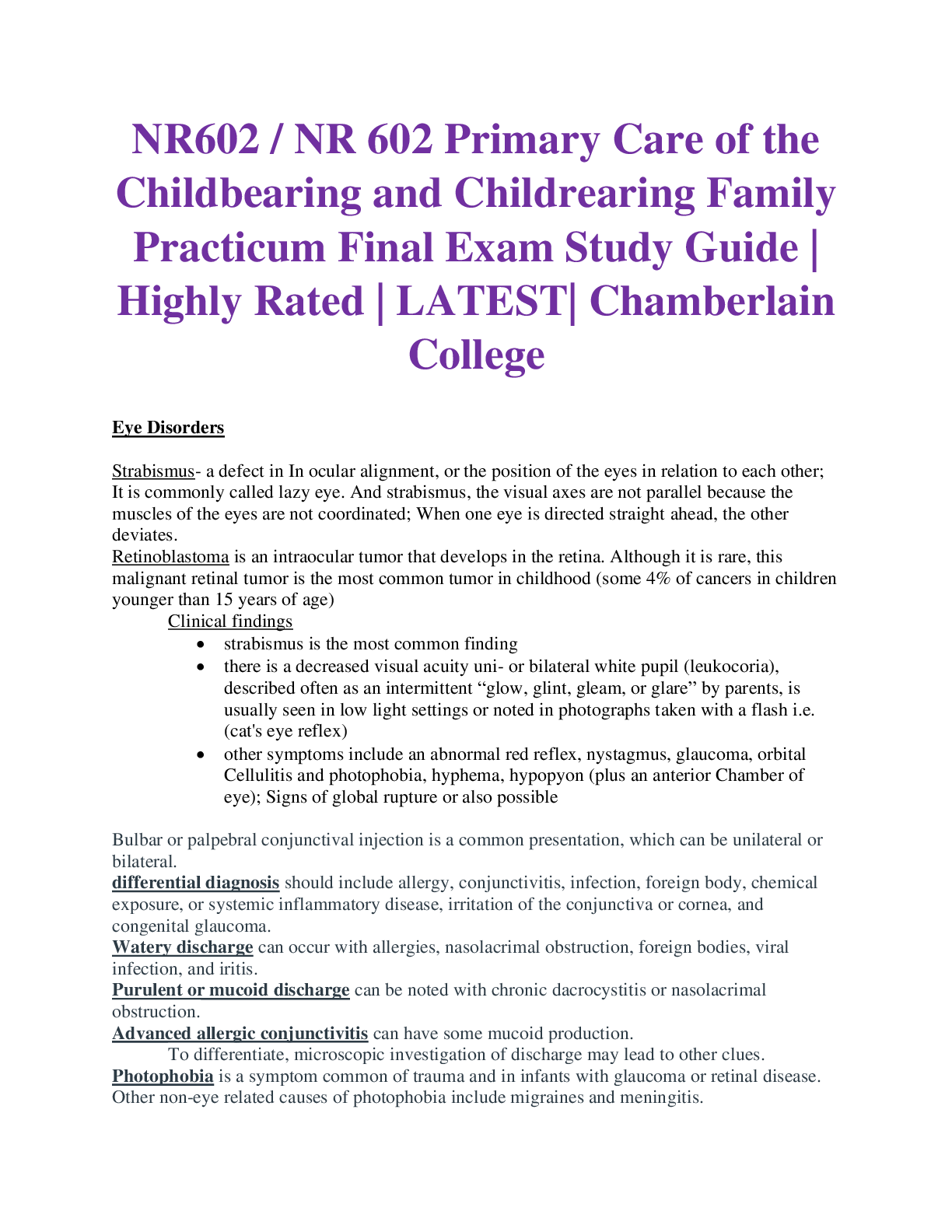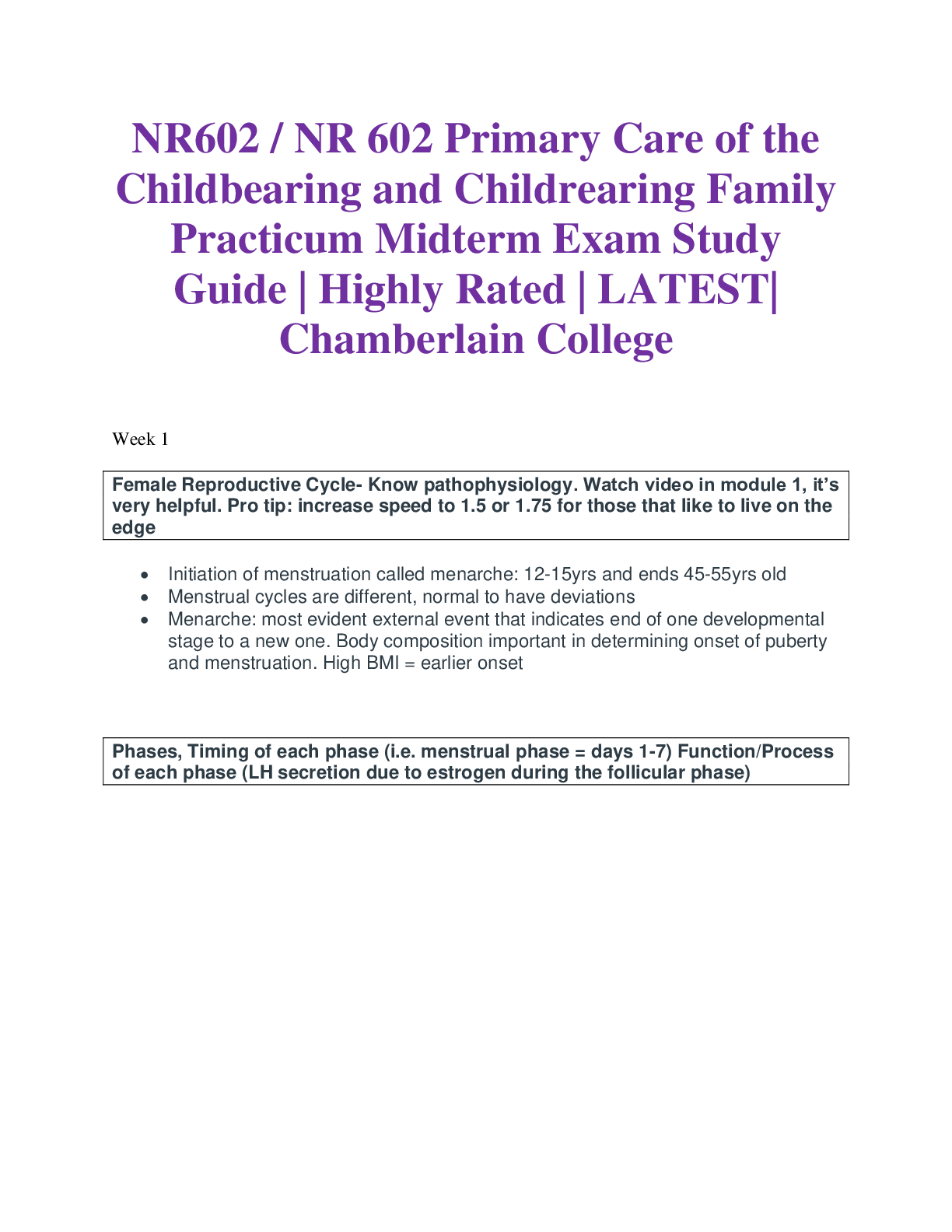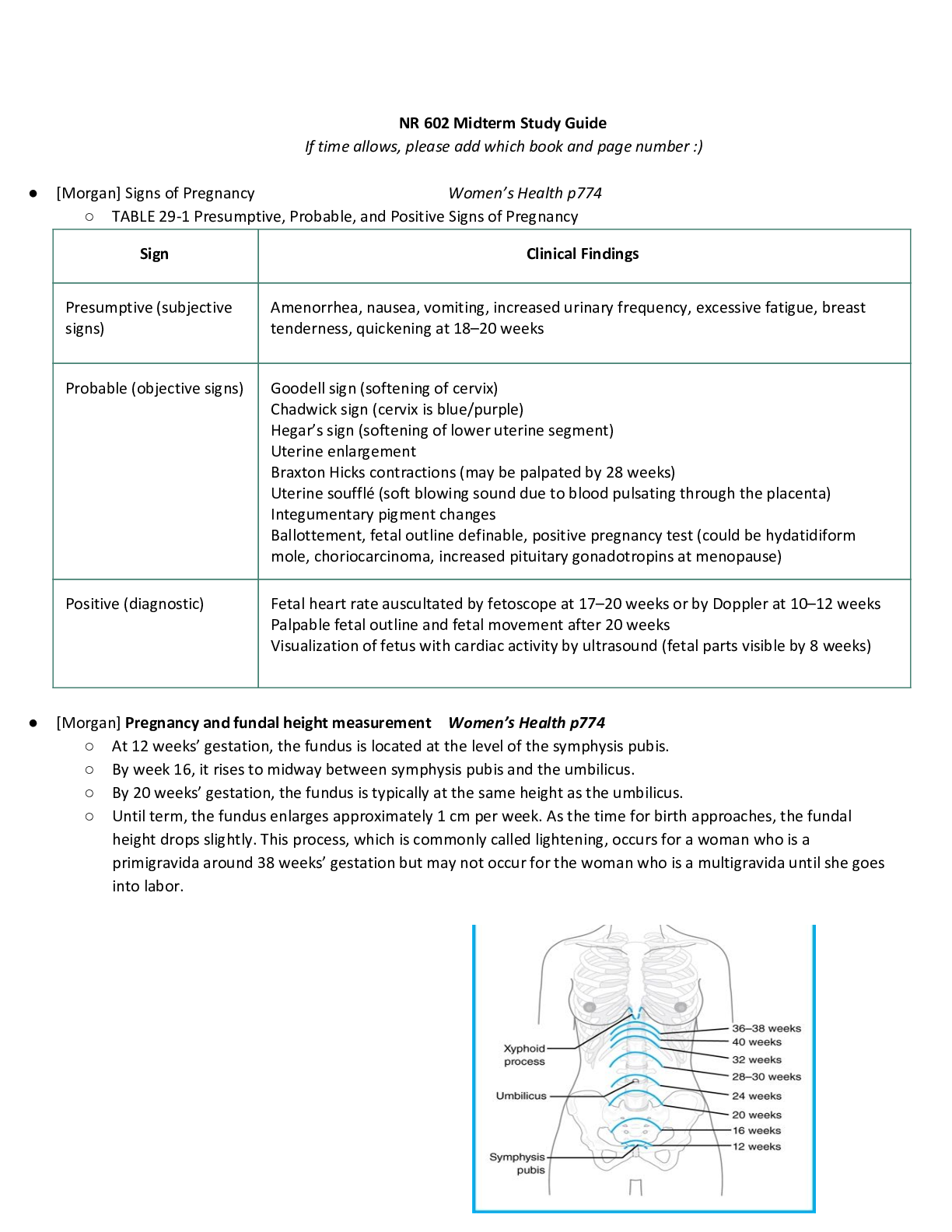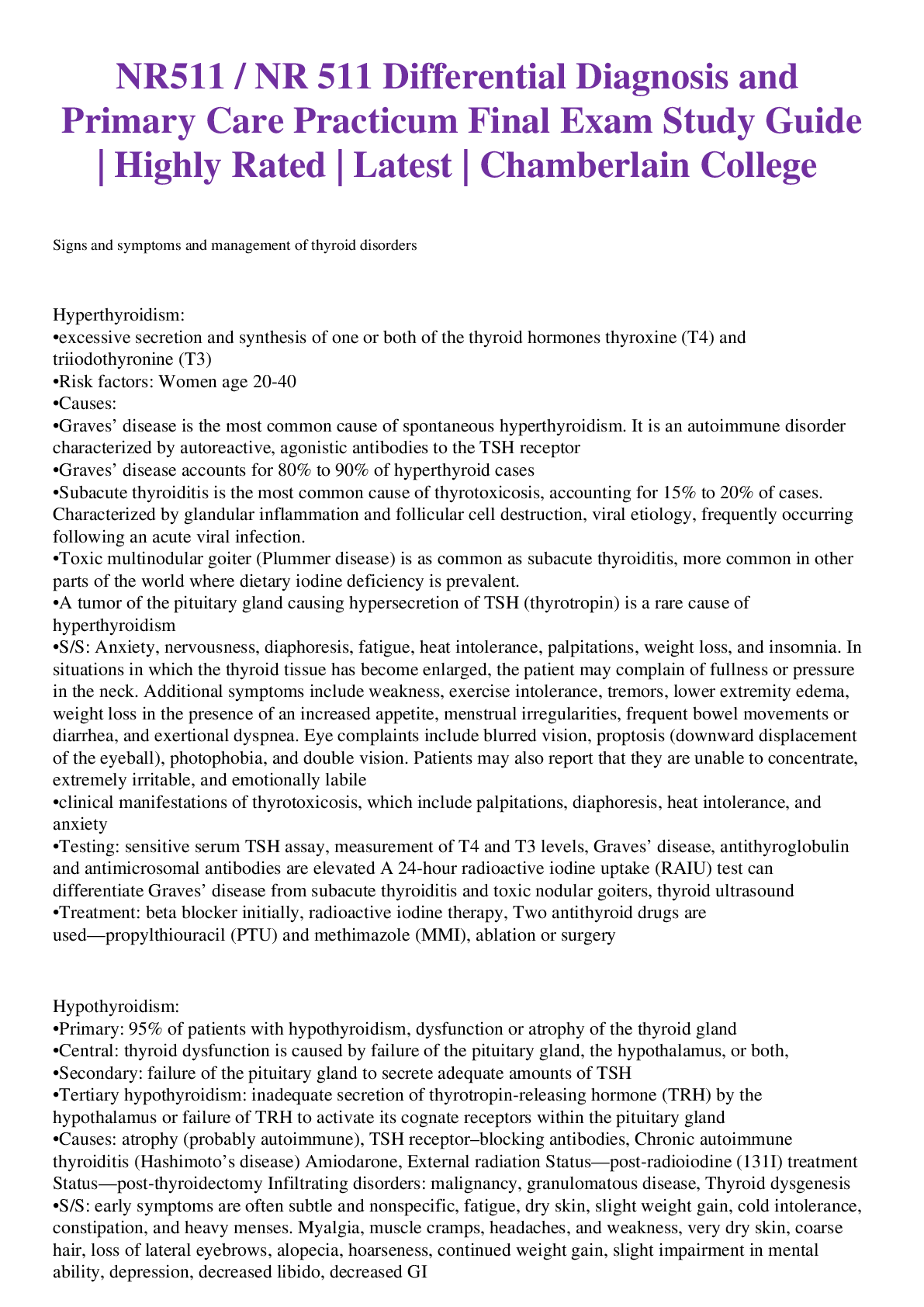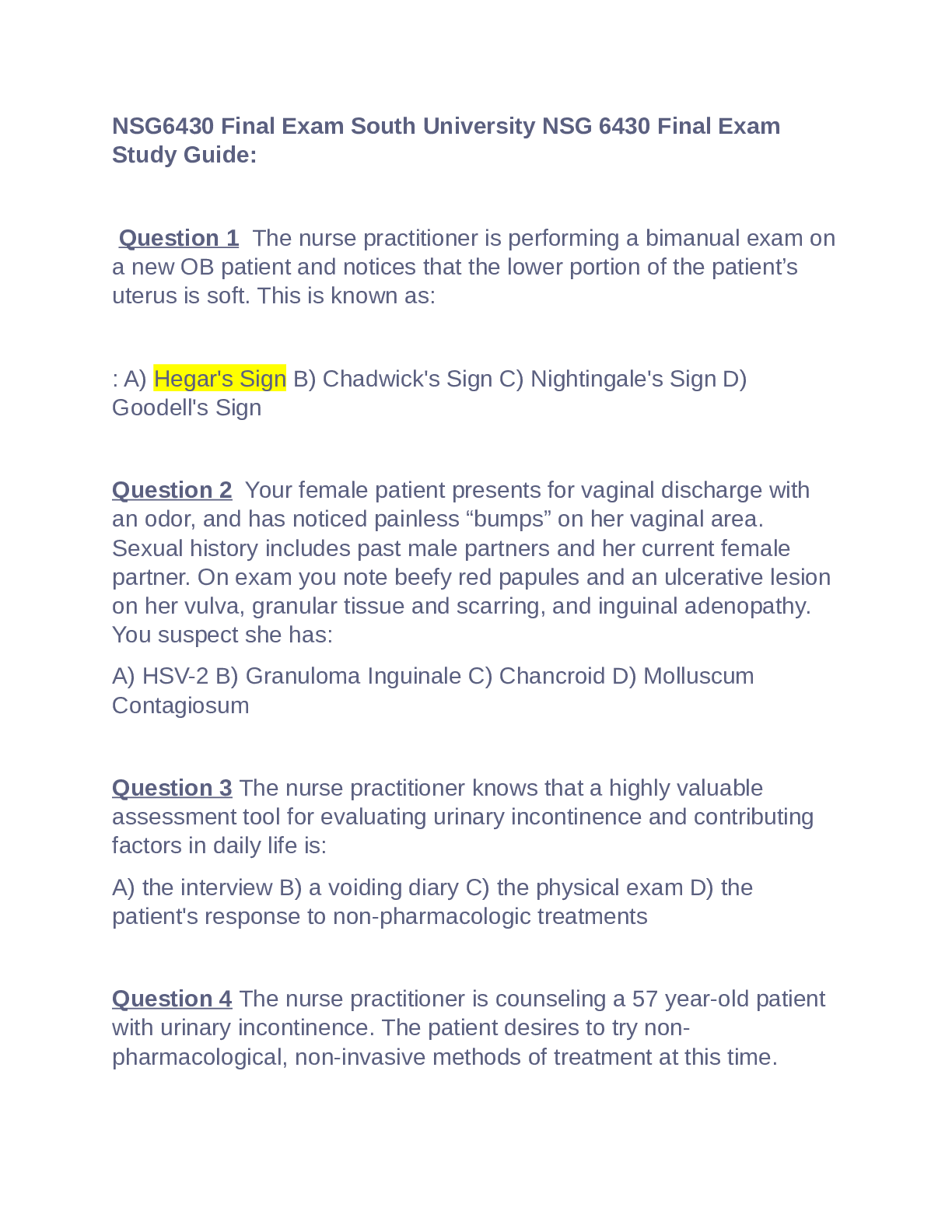*NURSING > STUDY GUIDE > NR511 Final Exam Study Guide Latest Updated 2022 Complete Graded A+ (All)
NR511 Final Exam Study Guide Latest Updated 2022 Complete Graded A+
Document Content and Description Below
NR511 Final Exam Study Guide Week 1 1. Define diagnostic reasoning -To solve problems, to promote health, and to screen for disease or illness all require a sensitivity to complex stories, to con... textual factors, and to a sense of probability and uncertainty. -Diagnostic reasoning can be seen as a kind of critical thinking. Critical thinking involves the process of questioning one’s thinking to determine if all possible avenues have been explored and if the conclusions that are being drawn are based on evidence. Diagnostic reasoning then includes a systematic way of thinking that evaluates each new piece of data as it either supports some diagnostic hypothesis or reduces the likelihood of others. 2. Discuss and identify subjective & objective data -Subjective: -reports -complains of -tells you in response to your questions. -Includes ROS, CC, and HPI -Objective: -what you can see, hear, or feel as part of your clinical exam. -It also includes laboratory data and test results. 3. Discuss and identify the components of the HPI -O: Onset of CC -L: Location of CC -D: Duration of CC -C: Characteristics of CC -A: Aggravating factors for CC -R: Relieving factors for CC -T: Treatments tried for CC -S: Severity of CC 4. Describe the differences between medical billing and medical coding Medical coding: is the use of codes to communicate with payers about which procedures were performed and why. -Medical billing: is the process of submitting and following up on claims made to a payer in order to receive payment for medical services rendered by a healthcare provider. 1 5. Compare and contrast the 2 coding classification systems that are currently used in the US healthcare system -The CPT system offers the official procedural coding rules and guidelines required when reporting medical services and procedures performed by physician and nonphysician providers. -CPT codes are recognized universally and also provide a logical means to be able to track healthcare data, trends, and outcomes. -ICD-10 codes are shorthand for the patient’s diagnoses, which are used to provide the payer information on the necessity of the visit or procedure performed. 6. Discuss how specificity, sensitivity & predictive value contribute to the usefulness of the diagnostic data -Specificity of a test, we are referring to the ability of the test to correctly detect a specific condition. -Predictive value is the likelihood that the patient actually has the condition and is, in part, dependent upon the prevalence of the condition in the population. -When a test is very sensitive, we mean it has few false negatives. 7. Discuss the elements that need to be considered when developing a plan Acknowledge the list -Negotiate what to cover -Be Honest -Make a follow-up 8. Describe the components of Medical Decision Making in E&M coding - There are three key components that determine risk-based E&M codes. -History -Physical -Medical Decision Making (MDM) E&M coding requires a medical decision maker -Medical decision making is another way of quantifying the complexity of the thinking that is required for the visit. -Complexity of a visit is based on three criteria: -Risk -Data -Diagnosis -Now, medical decision making is a special category. Why is this so important? Well, the MDM score gives us credit for the excess work involved in management of a more complex patient. 9. Correctly order the E&M office visit codes based on complexity from least to most complex 2 99212 - 99214 10. Discuss a minimum of three purposes of the written history and physical in relation to the importance of documentation -It is an important reference document that gives concise information about a patient's history and exam findings. -It outlines a plan for addressing the issues that prompted the visit. This information should be presented in a logical fashion that prominently features all data immediately relevant to the patient's condition. -It is a means of communicating information to all providers who are involved in the care of a particular patient. -It is an important medical-legal document -It is essential in order to accurately code and bill for services. 11. Accurately document why every procedure code must have a corresponding diagnosis code -Every procedure code needs a diagnosis to explain the necessity whether the code represents an actual procedure performed or a nonprocedural encounter like an office visit. 12. Correctly identify a patient as new or established given the historical information Patient status -New patient: one who has not received professional service from a provider from the same group practice within the past 3 years. -Established patient of your practice: has received professional service from a provider of your office within the last 3 years 13. Identify the 3 components required in determining an outpatient, office visit E&M code -Place of service -Type of service -Inpatient -Consultation’s -Outpatient -Office visit -Hospital admission -Patient status -New patient: one who has not received professional service from a provider from the same group practice within the past 3 years. -Established patient of your practice: has received professional 3 14. Describe the components of Medical Decision Making in E&M coding - There are three key components that determine risk-based E&M codes. -History -Physical -Medical Decision Making (MDM) E&M coding requires a medical decision maker -Medical decision-making is another way of quantifying the complexity of the thinking that is required for the visit. -Complexity of a visit is based on three criteria: -Risk -Data -Diagnosis -Now, medical decision making is a special category. Why is this so important? Well, the MDM score gives us credit for the excess work involved in management of a more complex patient. 15. Explain what a “well rounded” clinical experience means -Includes both children from birth through young adult visits for well child and acute visits, as well as adults for wellness and acute or routine visits 16. State the maximum number of hours that time can be spent “rounding” in a facility <25% 17. State 9 things that must be documented when inputting data into clinical encounter -date of service -visit E&M code (e.g., 99203) -age -gender and ethnicity -chief concern -procedures -tests performed or ordered -diagnoses -level of involvement 18. Identify and explain each part of the acronym SNAPPS -S: Summarize -N: Narrow -A: Analyze -P: Probe -P: Plan -S: Self-directed learning Week 2 1. Identify the most common type of pathogen responsible for acute gastroenteritis -Viral: Norovirus (Leading cause for adults) [Show More]
Last updated: 1 year ago
Preview 1 out of 43 pages

Reviews( 0 )
Document information
Connected school, study & course
About the document
Uploaded On
Mar 19, 2022
Number of pages
43
Written in
Additional information
This document has been written for:
Uploaded
Mar 19, 2022
Downloads
0
Views
105



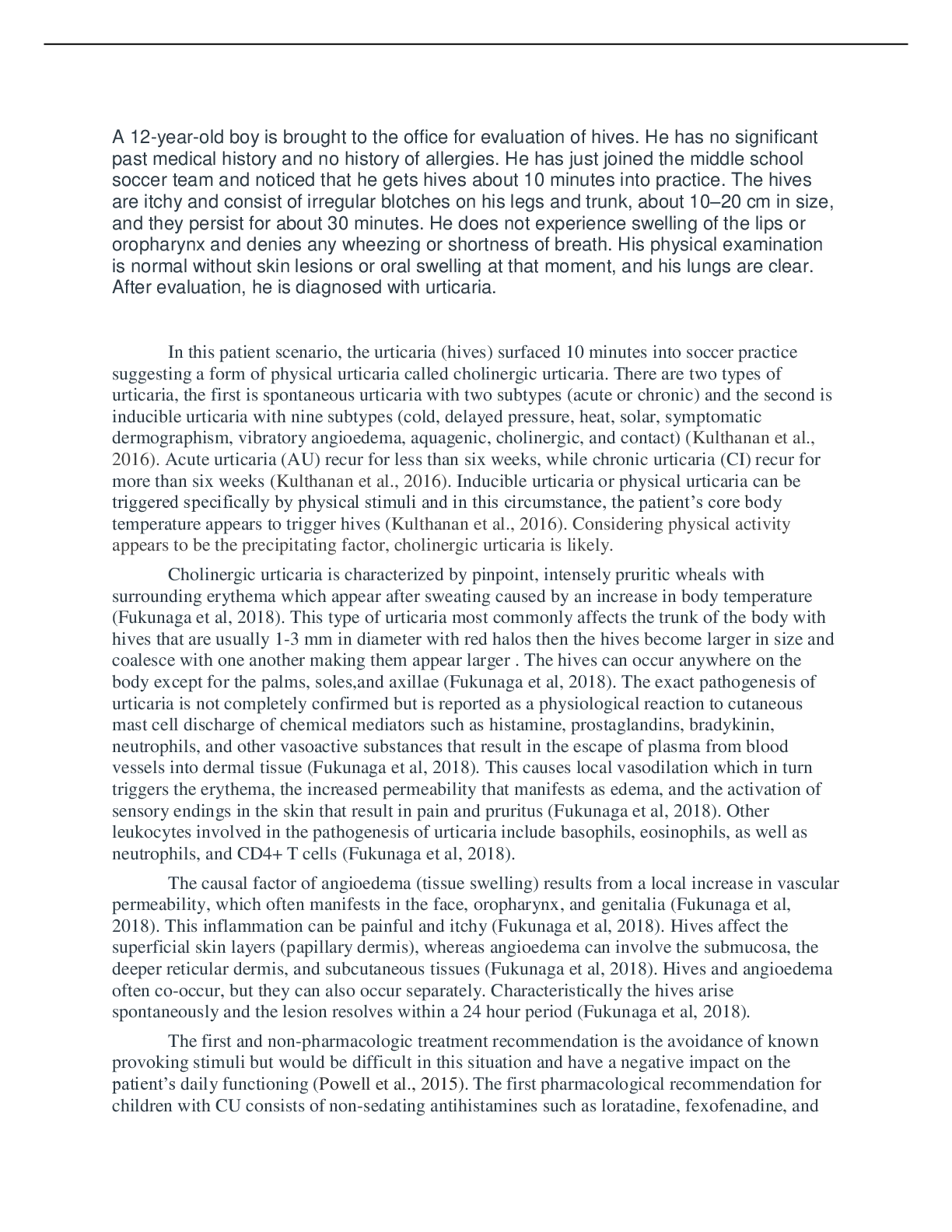
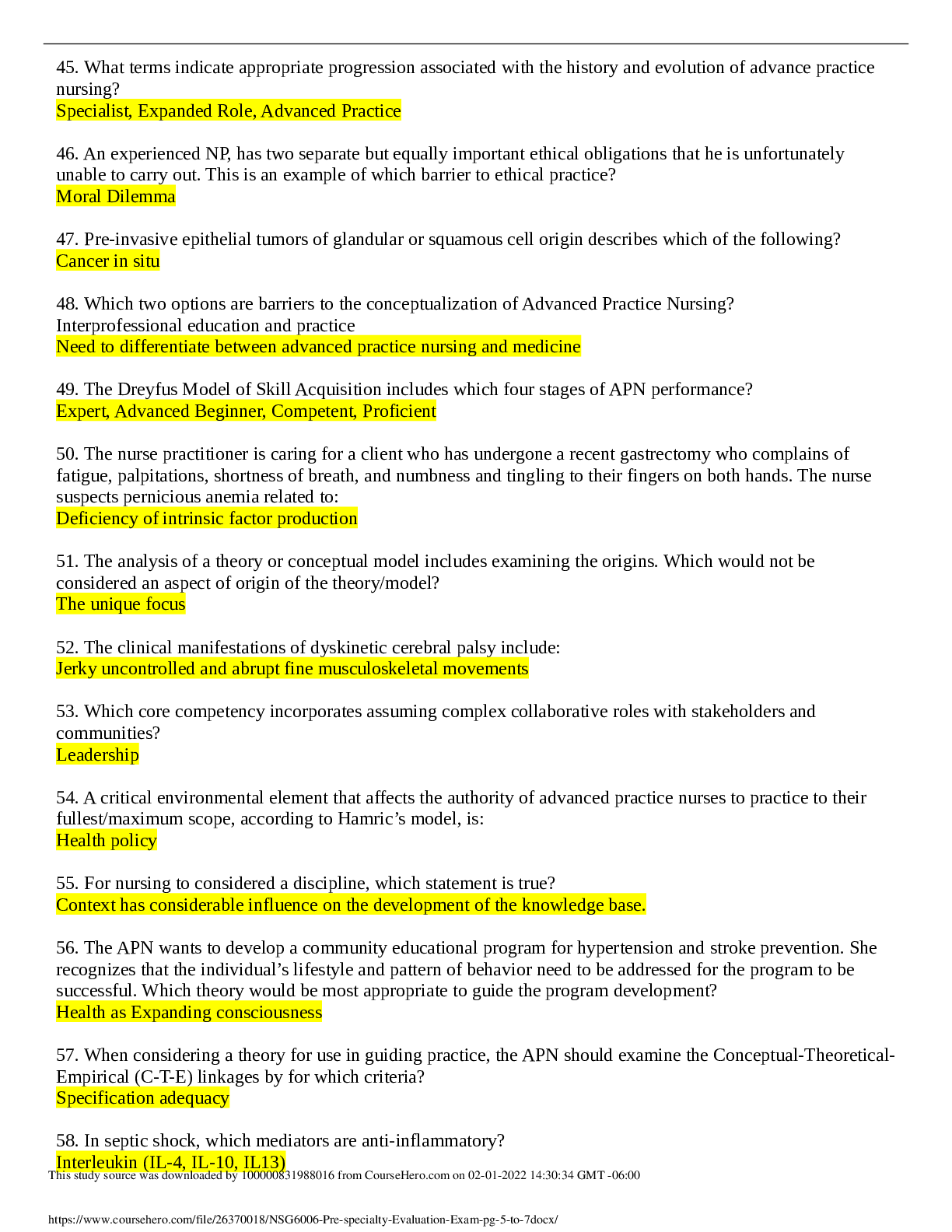





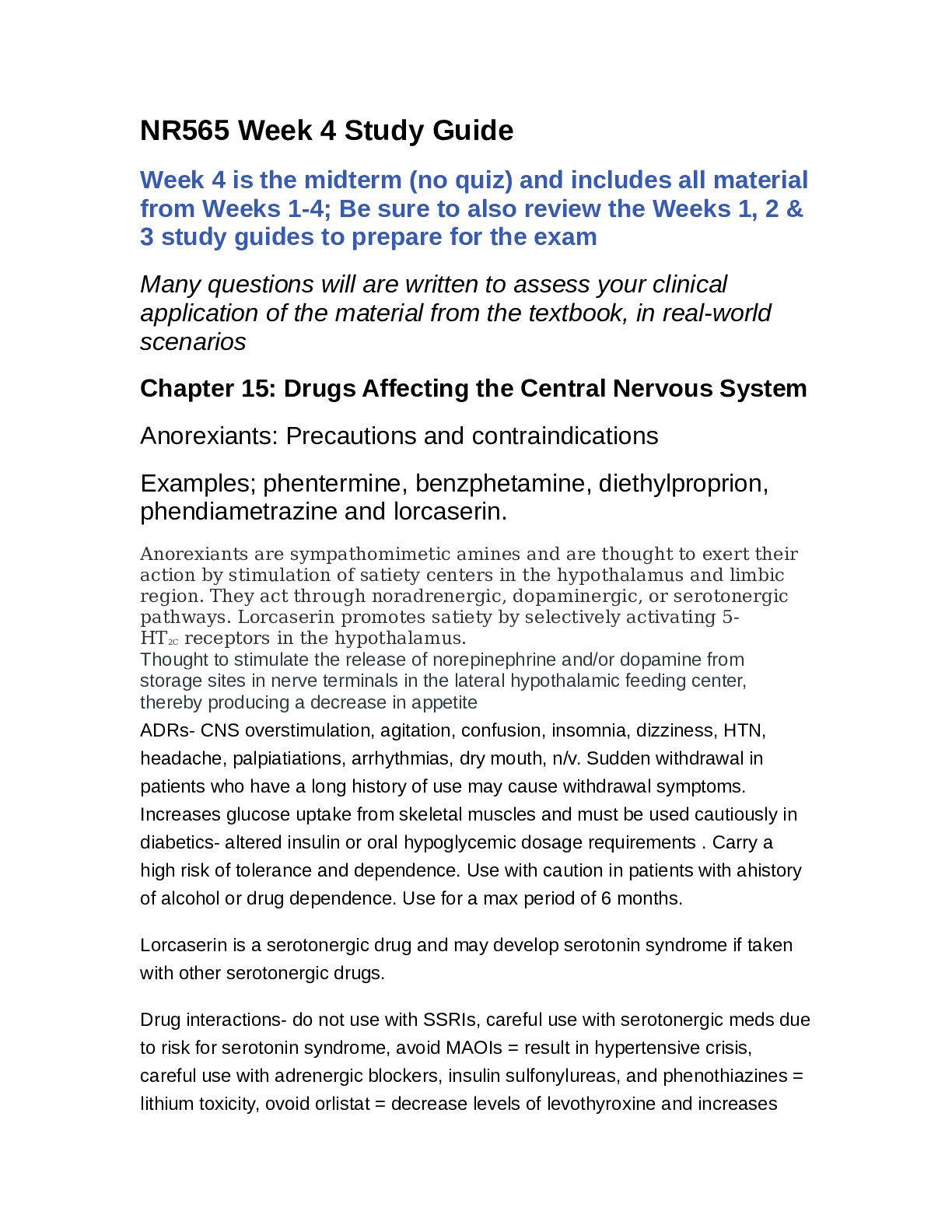
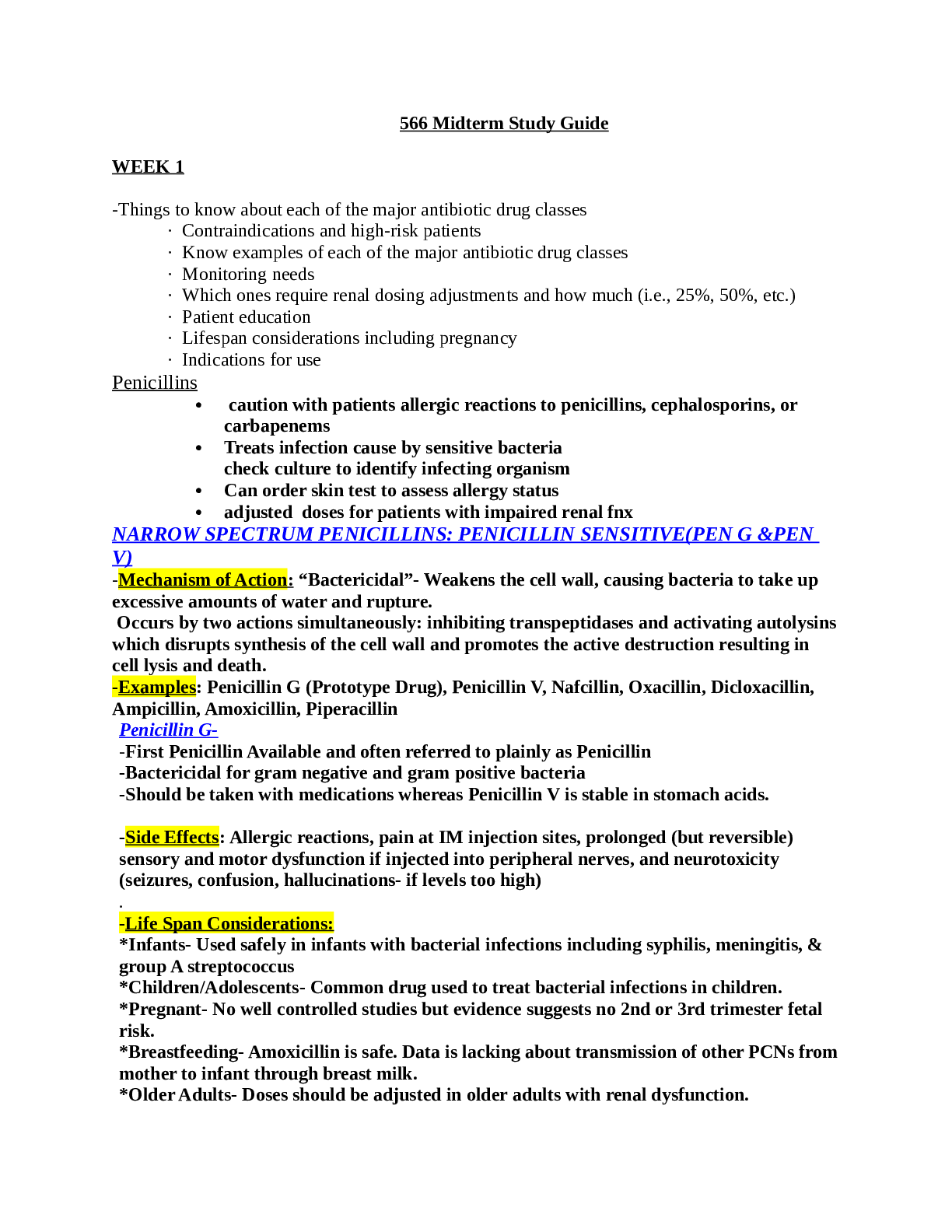


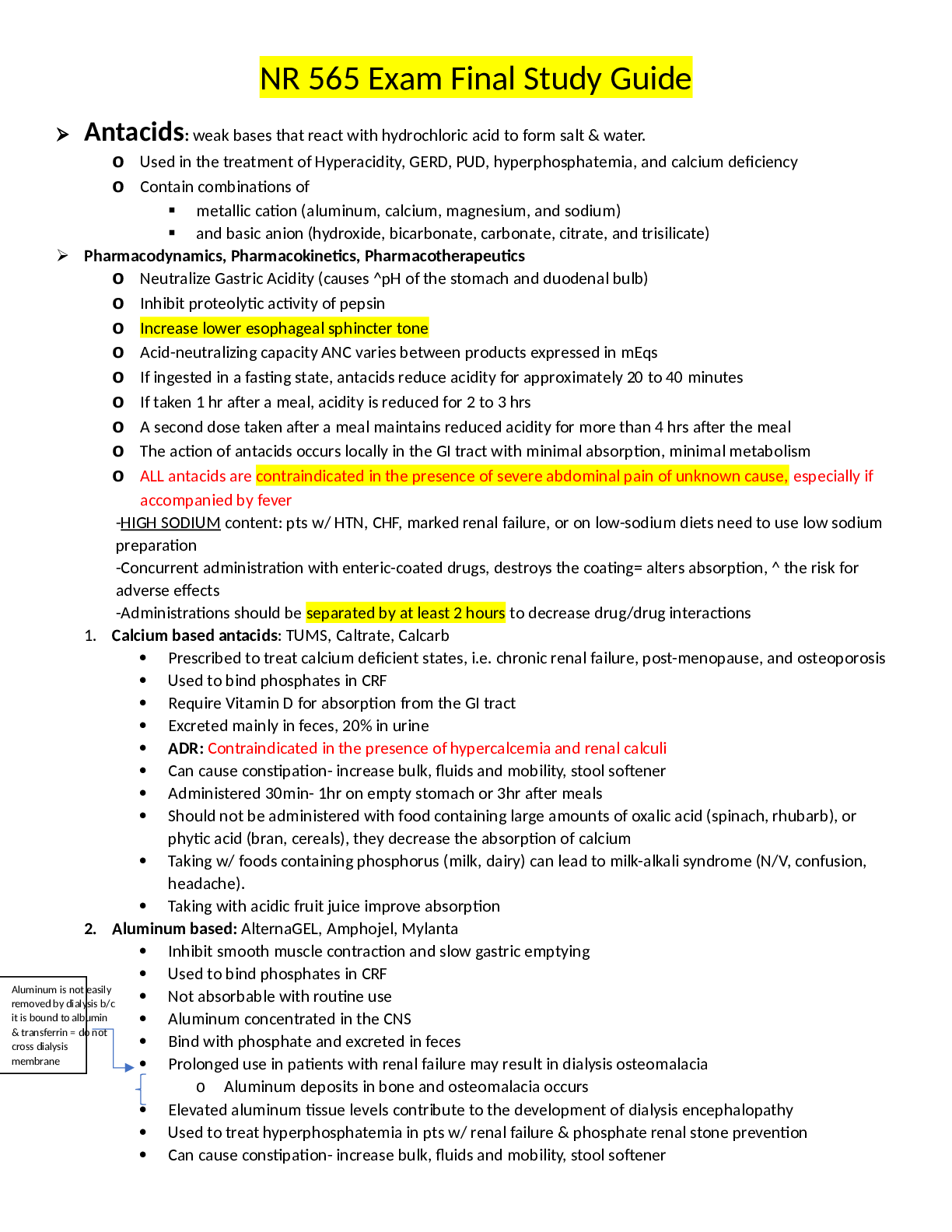





 Rasmussen College.png)
